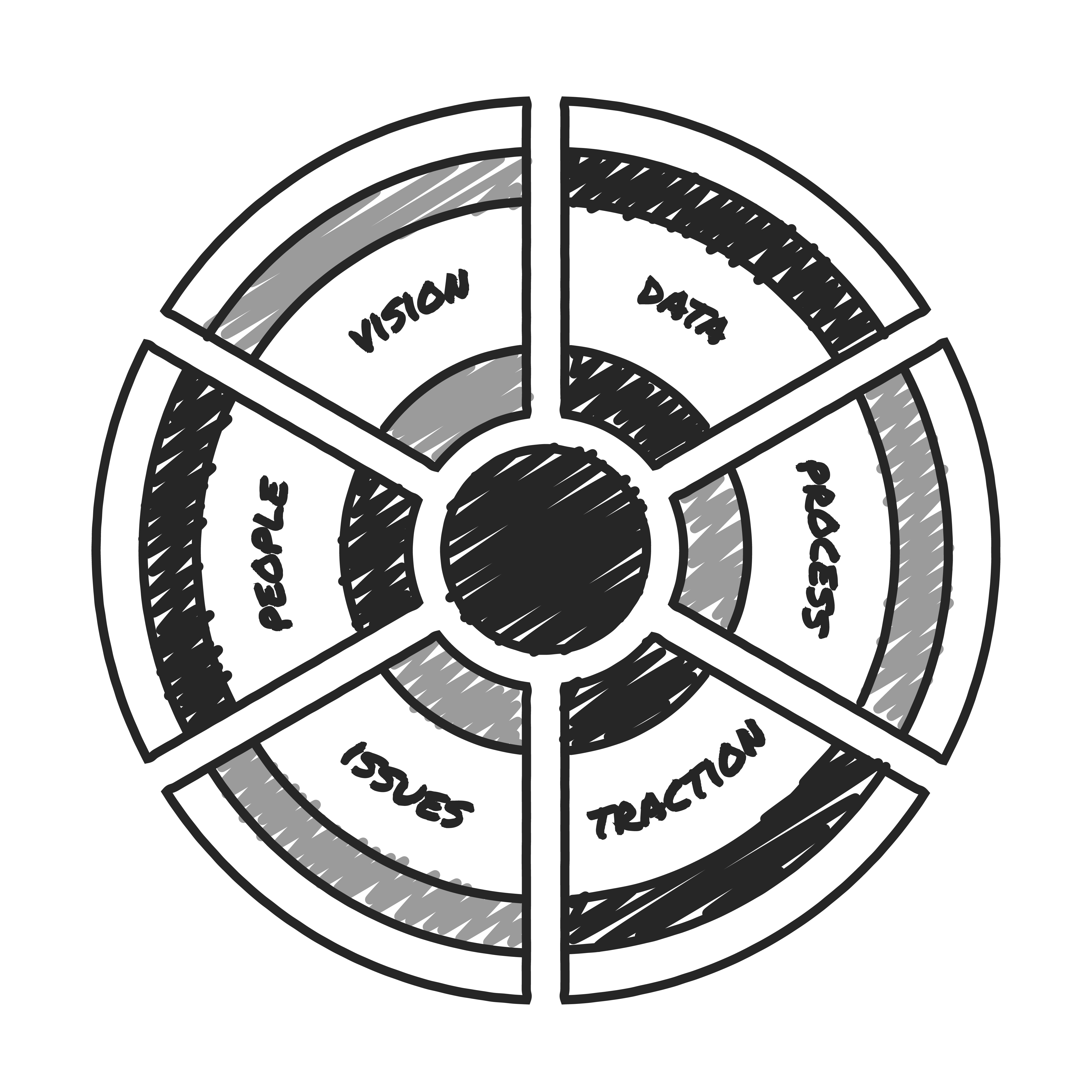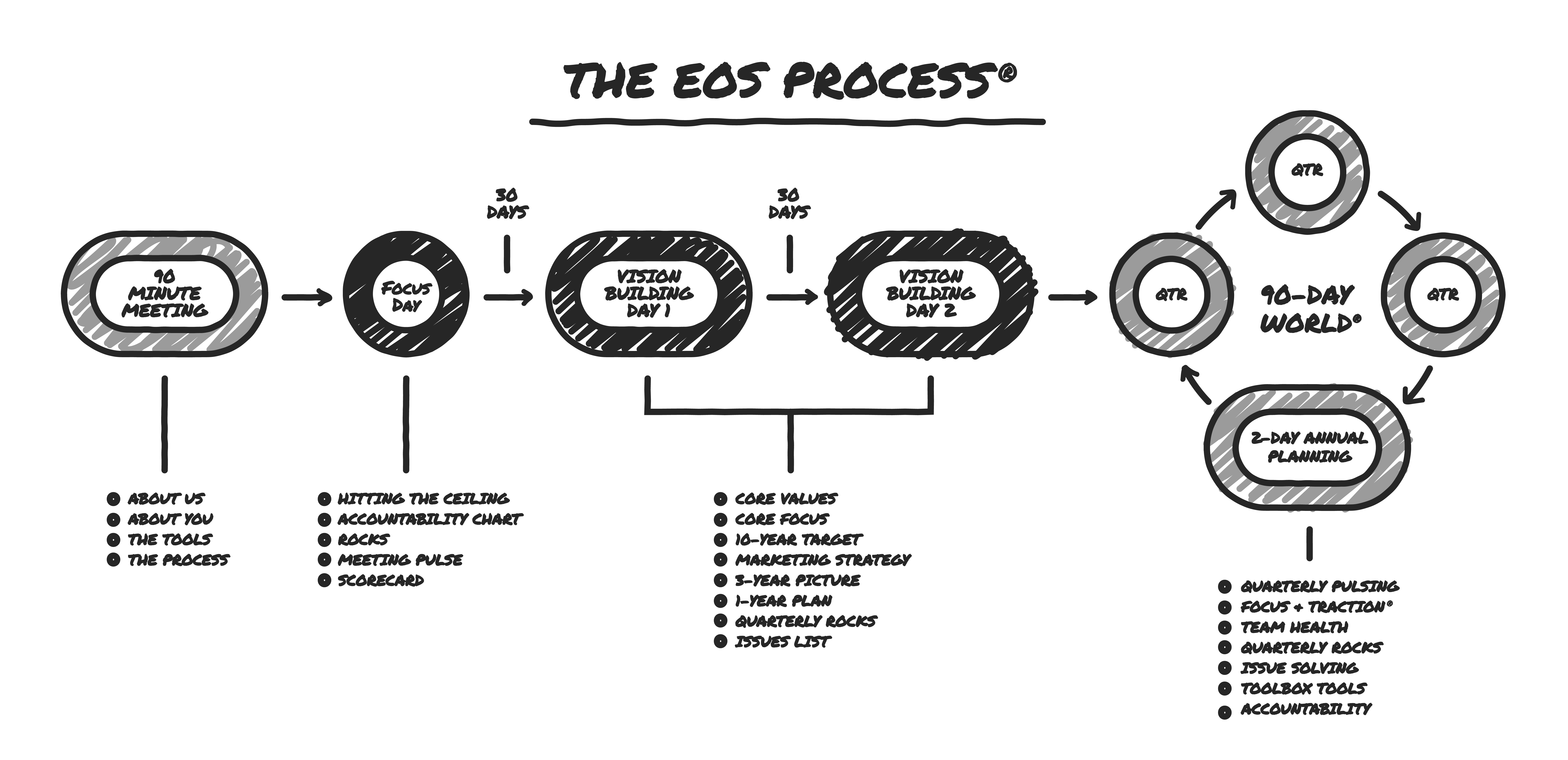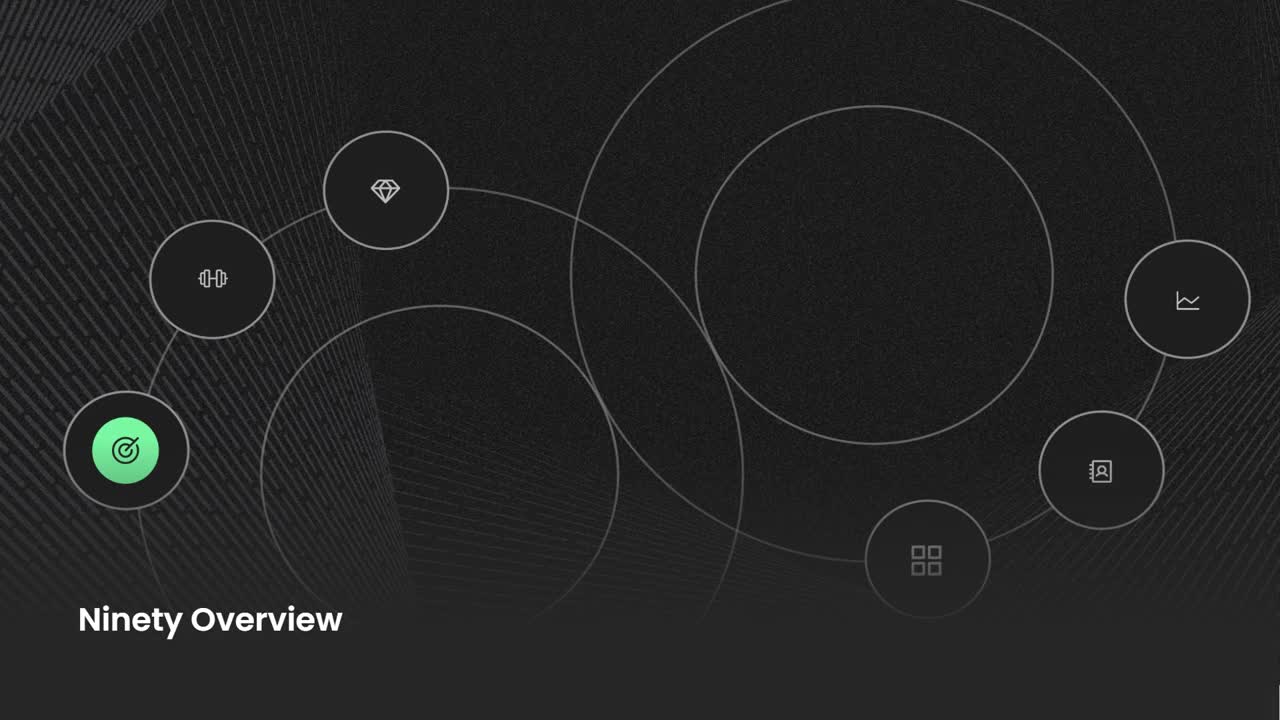What Is EOS®?
How Ninety powers organizations running on the Entrepreneurial Operating System®.
-
 Account Options and Troubleshooting
Account Options and Troubleshooting
-
 Integrations
Integrations
-
 Getting Started
Getting Started
-
 Insights
Insights
-
 Scorecard
Scorecard
-
 Rocks
Rocks
-
 To-Dos
To-Dos
-
 Issues
Issues
-
 Meetings
Meetings
-
 Headlines
Headlines
-
 V/TO
V/TO
-
 Accountability Chart
Accountability Chart
-
 1-on-1
1-on-1
-
People and Toolbox
-
 Directory
Directory
-
 Knowledge Portal
Knowledge Portal
-
 Assessments
Assessments
-
Mobile
Table of Contents
Editor's Note: Kris Snyder is a Professional EOS Implementer® who has worked with more than 50 clients and facilitated over 300 session days, all Powered by Ninety.
The Entrepreneurial Operating System® (EOS®), is a combination of concepts and tools organizations can use to standardize how their business operates. Every team in every organization has a way of doing things, we call that an “operating system.” EOS is a tried and proven methodology for small and midsize businesses.
Gino Wickman created EOS and founded EOS Worldwide to share the methodology with others and train Implementers who could bring an experienced perspective to organizations getting started and running on the system.
Ninety is the most comprehensive software for EOS. In this article, I'll provide a brief overview of the EOS Model®, the EOS Process®, and Ninety's impact on your EOS journey. Find our EOS-specific resources to help you get started with EOS Powered by Ninety here.
The EOS Model®
The EOS Model® compartmentalizes all the major aspects of running a great organization into Six Key Components®.
- Vision
- People
- Data
- Process
- Issues
- Traction
Every team in EOS companies works on strengthening these components every quarter as part of the 90-Day World® of EOS. Click through the tabs below to read more about each component.
Further Reading On the EOS Model
📖 Read my blog, What Is the EOS Model® and How Can It Transform Your Business, to learn more.
Vision
The Vision Component® is your description of who you are and your strategic plan for the future. Use the V/TO tool to document your organization's Vision, which you can find by answering EOS's 8 Questions™:
- What are your Core Values (the guiding principles embodied by your team members)?
- What is your Core Focus (your purpose, passion, niche, and/or just cause)?
- What is your 10-Year Target™ (a series of bold long-term goals)?
- What is your marketing strategy (your ideal customer, value proposition, proven process, and more)?
- What is your 3-Year Picture™ (what you want the organization to look like in three years)?
- What is your 1-Year Plan (what needs to be accomplished in the next 12 months to be on track for your 3-Year Picture)?
- What are your quarterly Rocks (quarterly goals that build toward your 1-Year Plan)?
- What are your issues (the obstacles, opportunities, challenges, and ideas in your way)?
📖 Read more about the Vision Component from my blog, Align Your Future with the Vision/Traction Organizer®.
People
Your vision requires a lot of work. You'll great people to get you from here to where you want to be. Strengthening your People Component™ involves:
- Getting the right people into the right seats
- Organizing an Accountability Chart
- Reviewing team members with GWC™
Ready to Bring Your Teams Onto Ninety?
📖 Learn how to invite users onto Ninety using the Directory tool.
Data
How will you gauge your progress on your way to turning your vision into reality? You'll need a strong Data Component™. Ninety empowers each team to maintain their own Scorecards to track the key Measurables they use to stay on the right path.
💡 Read our Scorecard tool help center articles here.
Effective weekly Scorecards contain 5-15 Measurables (mostly consisting of leading indicators) with each member of the team owning (being accountable for) at least one of them.
📖 Read more about the Data Component from my blog, EOS Scorecard™: Make Data Your Superpower.
Process
The Process Component™ is about how you get things done. Systemize what works to create consistency and prepare for future growth. Document the steps and sub-steps of your core processes on Ninety to make it easy for team members to follow proven paths.
📖 Learn more about this component from the co-author of EOS's latest book Process! in this blog post, Three-Steps to Meaningful Process Improvement.
Issues
Your strength in the Issues Component™ is based on how well your teams identify and document Issues on the short- and long-term Issues lists (find these on Ninety here).
Short-term Issues are the problems, obstacles, ideas, or opportunities to discuss and solve as a team during weekly meetings.
Long-term Issues, sometimes called LTIs, are items that don’t have priority this quarter, so you’ll discuss them during your next quarterly or annual meeting. Some of these become Rocks or stay an LTI until your team has the capacity to take it on.
IDS®
Solving Issues is a crucial part of any meeting. Typically, the IDS section of an EOS meeting is the longest agenda item. IDS is a simple framework for teams to master:
- Identify — The habit of adding problems, obstacles, ideas, and opportunities to our team's Issues list.
- Discuss — An on-topic conversation open to every team member that focuses on being solutions-oriented.
- Solve — Issues are solved when the person who identified the Issue is satisfied with the discussion, and the team agrees on the next steps needed.
📖 Read more about the Issues Component® from my blog, Gain Traction with IDS® from EOS®.
Traction
The Traction Component® is your team's ability to maintain the necessary discipline used to move the organization closer to its goals. The main tools of Traction® are Rocks and The Meeting Pulse®.
Rocks
Rocks consist of your team's most important objectives over the next ninety days. These quarterly goals position your company to complete its annual goals and substantially move the company forward.
📖 Read more about the Rocks from my blog, How to Implement EOS® Rocks for Business Success.
The Meeting Pulse®
When you meet, what you'll cover, and how you document the next steps are all a part of your organization's or team's meeting pulse. Strong EOS teams consistently meet for their weekly Level 10 Meeting™ and hold quarterly meetings every 90 days, including an extended annual meeting once per year.
Consistency of meetings allows your team members to focus on getting their work done because they know their Issues will be addressed and solved during meetings.
📖 Read more about Level 10 Meetings from my blog, Lead World-Class EOS® Level 10 Meetings™ Powered by Ninety.
The EOS Process®

The EOS Process® is how organizations begin implementing the Entrepreneurial Operating System through a series of meetings for the leadership team.
- The 90-Minute Meeting — A brief overview of EOS, the state of your organization, the EOS Toolbox™, and the full EOS Process.
-
Focus Day® — Learn and apply the following tools and concepts:
- Hitting the Ceiling
- The Accountability Chart®
- Rocks
- Meeting Pulse
- Scorecard
- Vision Building Day 1 — Review and continue mastering the Focus Days tools; then, begin identifying Core Values, Core Focus, and your 10-Year Target.
- Vision Building Day 2 — Review all preceding days, develop the marketing strategy, build the 3-Year Picture, align on the 1-Year Plan, set quarterly Rocks, and identify long-term Issues.
After these four meetings, your team enters the 90-Day World® consisting of weekly Level 10 Meetings, quarterly meetings every ninety days, and extending one of the quarterlies into an annual meeting.
Further Reading On the EOS Process
📖 Read my blog to learn more, The EOS Process®: From Start to Infinity.
EOS Powered by Ninety
Over 18,000 companies power their EOS journey with Ninety. We apply digital tools and integration to the proven practices of the Entrepreneurial Operating System®.
To see how you can use our platform to improve your business, watch the video below or click here for more EOS-specific resources.
